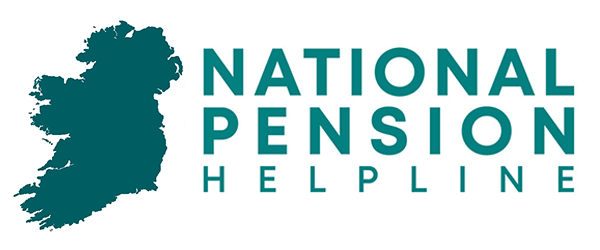It’s easy to put the idea of retirement to the back of your mind when you are in the early stages of your career.
It’s often not until people are in their 30s that they finally take their heads out of the sand and begin to take their future more seriously.
If you are considering reviewing your current pension situation, or thinking about starting a pension, this guide covers all the essentials to put you on the right track.
We explore some of the best pension funds to compare, why starting now is crucial, how to use tax relief to bypass the taxman, pensions versus other investments, and we also answer some common FAQs.
But let’s begin with our 4 key principles of pension investing in your 30s.
Principles for Pension Investing in Your 30s
Best Irish Pension Funds in your 30s
Now that we’ve established our 4 key principles, we selected the best funds to consider in your 30s, from the 5 largest pension providers in Ireland.
These funds are: Zurich Prisma 5, Irish Life MAPS 5, Standard Life Managed, Aviva Multi-Asset ESG Fund 5, and New Ireland iFunds 5.
Compound Growth & Why Starting Early is Key
Although in your 30s you are likely to be balancing more financial responsibilities than in your 20s, starting to invest early and as much as possible are the two best decisions that you can make today. This is mainly because of the power of compound growth.
To show just how important starting your pension early is, and how compound growth could work in your favour, let’s look at 3 different scenarios.
Scenario 1: You invest €200 per month from age 30.
| Age | Total Amount Invested | Total Pension (8.4% growth p.a) |
| 30 | €0.00 | €0.00 |
| 40 | €24,000 | €35,435 |
| 50 | €48,000 | €114,818 |
| 65 | €84,000 | €452,220 |
Scenario 2: You invest €200 per month from the age of 40.
| Age | Total Amount Invested | Total Pension (8.4% Growth p.a) |
| 40 | €0.00 | €0.00 |
| 50 | €24,000 | €35,435 |
| 65 | €60,000 | €186,045 |
Scenario 3: You wait until you’re 40 to start your pension, but you invest €300 per month.
| Age | Total Amount Invested | Total Pension (8.4% Growth p.a) |
| 40 | €0.00 | €0.00 |
| 50 | €36,000 | €53,152 |
| 65 | €90,000 | €279,068 |
Pensions vs Other Investments in Your 30s
So you now understand how important starting early is, and want to start investing. But because you are a long way off retirement, you might be weighing up whether investing in a pension is sensible from a practical standpoint.
Even though most of your savings will be tied up for a few decades, there is no better investment you can make in your 30s, because they are extremely tax efficient for two main reasons:
- You can withdraw a 25% tax-free pension lump sum of up to €200,000 from the age of 50.
- Your pension savings grow tax free, in that you don’t have to pay Capital Gains or DIRT.
While it may be tempting for people in their 30s to opt for standard investments, like shares or even a savings account, these offer no tax relief.
This means that choosing to invest in a pension fund will leave you tens of thousands of euros better off in the future from tax savings.
Taking Advantage of Tax Relief in Your 30s
If you’re still on the fence about starting a pension or reviewing your current pension situation, there is another tax incentive to take into consideration: tax relief on pension contributions.
From the age of 30 to 39, you can contribute up to 20% of your salary with tax relief.
This means that your taxable earnings are reduced by the amount of your salary that you contribute towards your pension. This can be done by making AVCs – Additional Voluntary Contributions.
For example, if your salary was €50,000, you could contribute up to €10,000 per year with tax relief. This would be deducted from your salary before you are taxed.
So instead of being taxed 20% of €42,000 and 40% of €8,000 – you would only pay the 20% rate (as you put €10,000 into your pension).Find out more about contribution limits with our free maximum contributions calculator.
Hidden Charges and Things To Be Aware Of
You should remember that there are things that can affect your returns, such as management fees and other charges.
Although these are usually around 1%, there can be significant differences between providers. These differences are more important as time goes on as management fees are charged on your overall savings.
Assuming the management charge is 1% and annual growth is 8.4%, in 20 years’ time, your pension pot could be €100,000. In this scenario, you would be charged €1,000 per year in management fees alone.
Now let’s say that the management charge is 1.5%. With a pension pot of 100,000, this would be €1,500 – increasing every year.
Another thing to consider is the contribution rate, which is generally 100% which would mean that all of your contributions would go into the fund. However, be aware that with some funds, the contribution rate could be 95% – a substantial difference. This means that for every €100 you contribute, only €95 actually reaches your pension.
The bottom line here is this: even if the percentage seems small, after a few decades management fees and other charges can have a significant impact on your savings, and they should be taken into account. A good target to aim for is a 1% management charge and a 100% contribution rate.
Final Tips and Advice
There are numerous factors which can affect your pension, and each decision can make a massive difference over time, such as how much you contribute, performance, and annual fees.
Let’s run through a quick summary before we say goodbye.
Although this article is intended to inform and help clarify your decision making, we always advise taking personalised financial advice from a regulated advisor before any material changes are made.
We have included some useful links for further reading to help you get started on your retirement savings journey. Good luck!

